Buenos Aires may be an exciting city but the time will come where you’ll be ready for some fresh air and room to stretch your legs.
An easy (and cheap) way to get out of town for the day is by taking the Tren de la Costa from Buenos Aires to Tigre (or one of the many relaxing stops along the way).
This small train hugs the river’s coastline and features antique stations, markets, hip open-air restaurants, and outdoor activities like kayaking and windsurfing.
Keep reading to find out all of the best stops and how to manage this scenic train for one of the best do it yourself day trips from Buenos Aires.
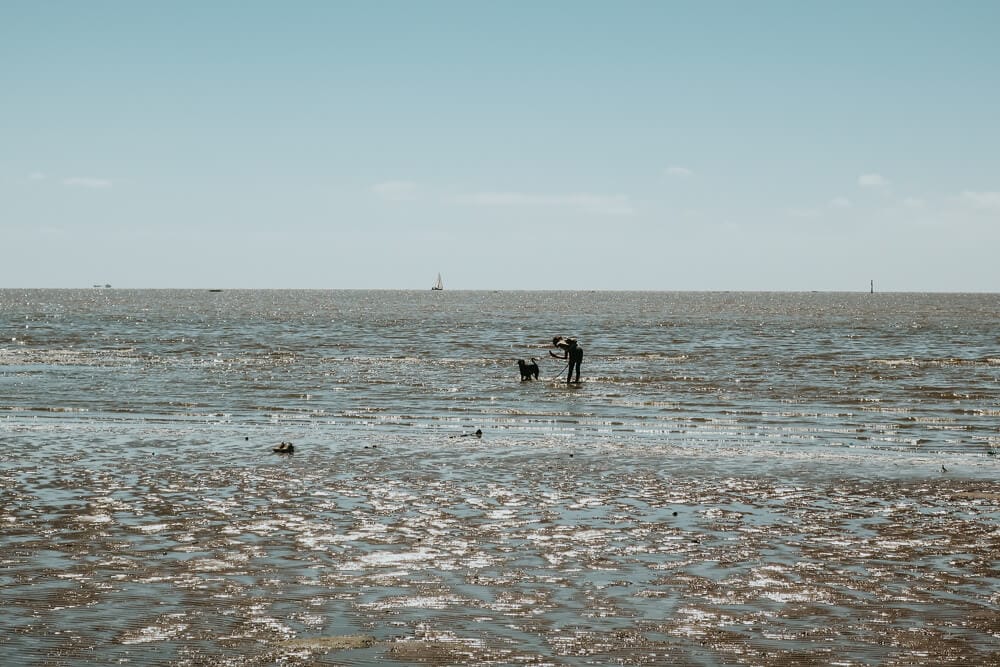
QUICK NOTE: This post contains affiliate links and Sol Salute may receive a commission for purchases made through these links, at no extra cost to you.
NOTE ON TOUR OPERATORS: I link to tours on three tour aggregators – GetYourGuide, Viator, and Tangol. All are reputable. I do my best to find the most affordable option of the three but prices and availability can vary.
Tren de la Costa: Top Stations From Buenos Aires to Tigre
The Tren de la Costa is one of two trains you can take to Tigre from Buenos Aires.
The first is going to Retiro’s Mitre line and getting the Tigre train. This is cheap and easy if your goal is to get to Tigre’s dock quick.
The second and most scenic option is the Tren de la Costa. This train requires a connection so it’s SLIGHTLY (slightly) more complicated but is still cheap and easy.
The Tigre line ends at a station near the boat terminal and will be the most convenient if your goal is hop on a boat into the delta.
The Tren de la Costa’s terminal is by Tigre’s Puerto de Frutos market. It’s ideal if you want to make a day of exploring the coastal stations and wandering the whicker market. There are a few touristic boat excursions into the delta from the market, but fewer (you will see the booths).
This post is a guide to the Tren de la Costa and all the beautiful stations you can choose to visit on the way, whether it’s a quick hop on and off to look around or as a destination apart.
Read Next: How to Get Around Argentina from Planes to Trains

Maipu
Maipu is the first station in the city, one terminal for the Tren de las Costa.
There used to be a unique (and oddly placed) antique market in the pedestrian pathway that crosses Maipu Avenue (that connects the two train lines).
It’s gone now which is an improvement in that the station feels much cleaner and professional.
Before you could easily wonder, am I really in the right place? Do I need an antique mirror and 4 new dining chairs or do I want to go to the river? (Honest thoughts of mine).
But now it’s straight to the point, this is a train station, not a market. I miss the market.
You can purchase your ticket at the ticket windows or if you have a SUBE card you can pay on the train itself (scanners are on each car by the doors).
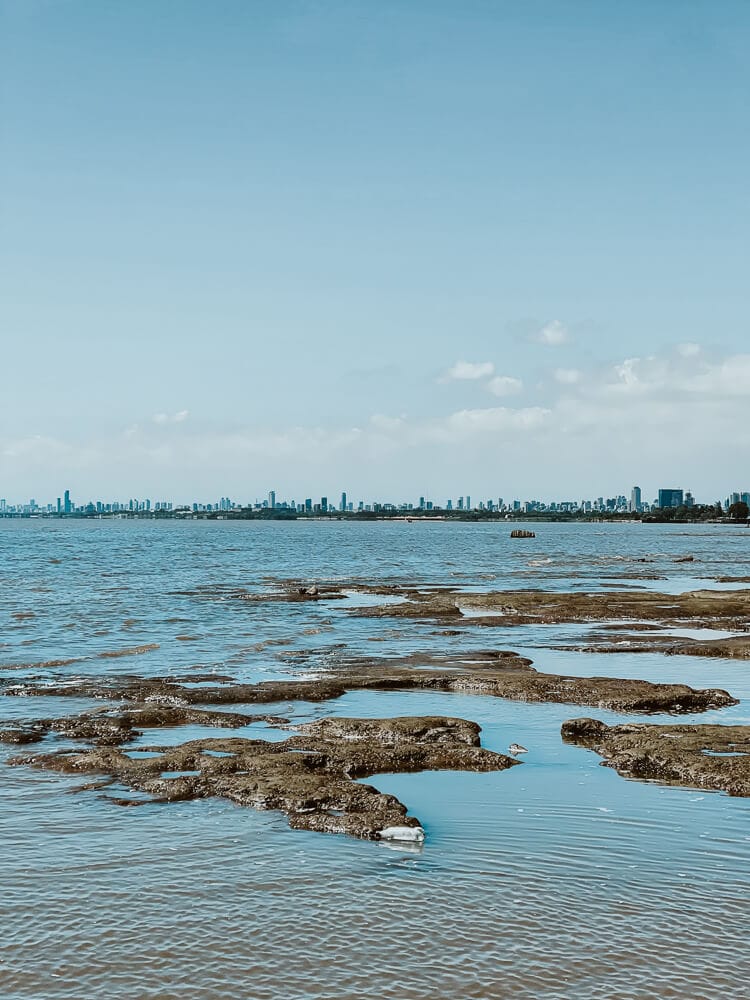
Borges – Olivos
Borges Station, being the first station, is so close that it begs the question do you even need to take the train or can I handle walking the four blocks from Maipu?
Regardless, the station itself has been beautifully restored and the cobblestone tree-canopied square that surrounds it so pretty it’s worth a visit.
Bike & Coffee is a boutique coffee shop chain and they’ve opened yet another beautiful storefront in the station itself. If you’re taking the train early enough you could time it to have breakfast here to start the day trip off right.
Definitely walk a block to Plaza Vicente Lopez y Planes. This pretty plaza is home to one of my favorite churches in town, completely covered in ivy.
You’ll also only be a short walk (a few blocks) from Puerto de Olivos with plenty of dining options. Mostrador Santa Teresita is one of the most popular options here with gorgeous views of the water and excellent food and drink.
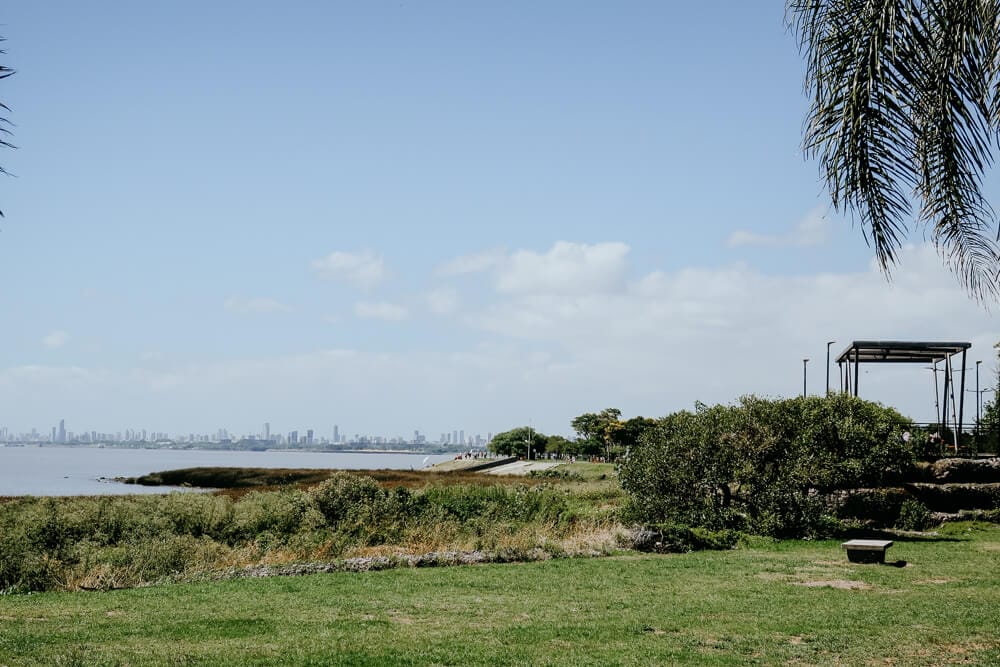
Anchorena – Martinez
Anchorena is a favorite of mine when I want to spend a day on the river. The station is steps from the water so it’s incredibly easy.
The station itself is beautiful and also houses its own restaurant, Tribu San Isidro.
There’s a playground immediately as you exit the station so if you’re traveling with kids this is a good stop for expending any of that extra energy.
Activities here are minimal, which is why I like it. There’s a walking path to walk along the shoreline and watch the fishermen guarding their lines.
For lunch, I always like to visit Dulce Maria. This beachy restaurant is right by a dock on the water with tables set up right by that dock. During the week they have a competitive 2 and 3 course lunch special that can’t be beat.
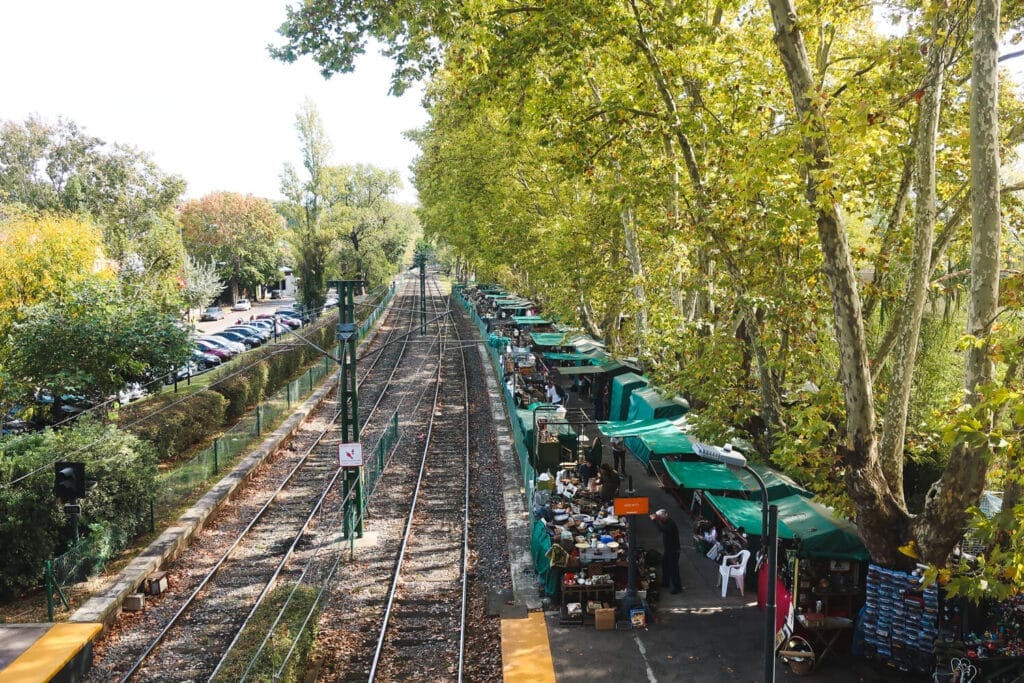
Barrancas – San Isidro
Barrancas is a station that has it all. Walking around this area, Bajo San Isidro, can become a full day on its own.
To start, the station itself is the most beautiful on the Tren de la Costa. There’s another Bike & Coffee in this station as well.
On weekends the train platform converts into an antique market (one of the most unique Buenos Aires markets). You can find some real gems if you have the time.
When you cross the street you’ll see Peru Beach, one of my favorite spots outside of the city. This restaurant and bar is the best spot to get a drink (their clericot is great!) and lounge on the grass.
If you’re in Buenos Aires long term you could even learn to windsurf, kitesurf, or rent kayaks and stand up paddle boards at Peru Beach, Puerto Tablas, or El Molino.
El Ñandú is a classic lunch spot but if you walk the blocks between Las Barrancas and San Isidro stations there are a ton of new restaurants and cafes opening up.

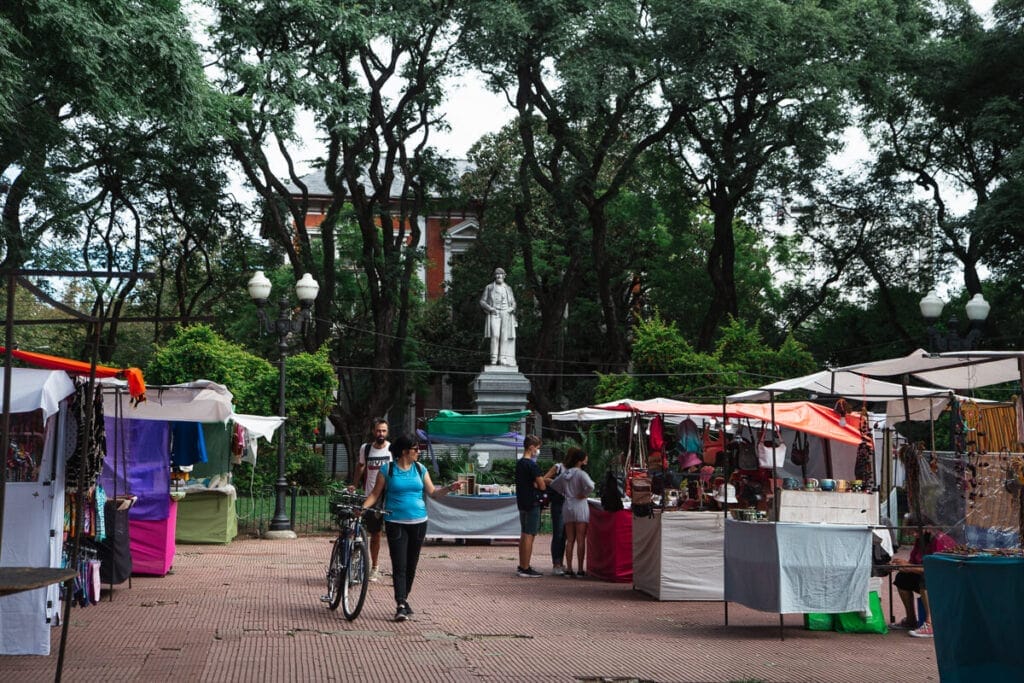
San Isidro
The station for San Isidro itself isn’t beautiful. It’s a defunct mall with mostly empty storefronts, but the area itself is full of things to see.
Keep in mind that it’s within short walking distance of Las Barrancas so I recommend getting off at Las Barrancas to see the station and market and you can always just walk the few blocks to San Isidro. Exploring both stations and their surroundings can be an entire day out.
Just across the street from the station is Plaza Mitre. Head up the stairs to this tree lined square to see San Isidro’s Cathedral and posh downtown.
There is also an artisan market here on the weekends. The few blocks behind the cathedral are historic and were originally the homes of this regions aristocrats in the 1800’s.
If you explore the blocks on the opposite side of the tracks (towards the water) there are great restaurants. I love Bar Seddon and Lowell’s Biergarten (for burgers) but there are a lot to choose from.

Delta – Tigre
The final terminal, Delta, is right by the Puerto de Frutos Market.
This market is famous for its mimbre (whicker) and wooden furniture. It’s not quite what it once was but there are some great little home goods shops and you can still get baskets and whicker galore, just try to weed out the shops selling mass produced nonsense imported in.
You can hire boat tours of the Delta right here in the market or walk to the Estacion Fluvial for other options.
Read more in my Tigre Guide here.
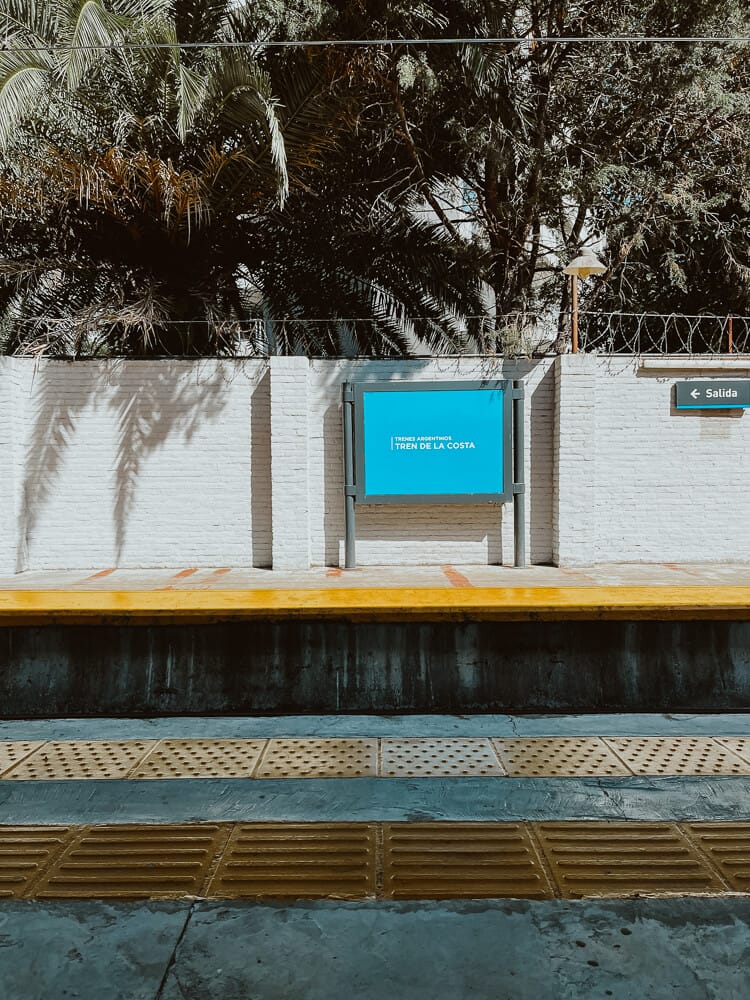
Important: How to Get There
Here is the step-by-step guide on how to get to the Tren de la Costa.
- Get to Estacion Retiro-Mitre and use your SUBE to take the Mitre Line to the final terminal, Mitre Station.
- When you exit the turnstiles, take the stairs/escalators to your immediate right to take the pedestrian bridge to connect to Tren de la Costa’s Maipu station.
- You can use your SUBE transportation card if you have one but don’t need one. You can purchase tickets at the ticket booths but they’re slightly more expensive.
- If you can afford it, taxis or Cabify (for more info read about apps to download for Argentina) are an easy alternative to reach the Maipu Station and avoid the connection
Keep Reading: A Complete Guide to Rail Travel & Trains in Argentina
When to go on the Tren de la Costa
If you’re here on a weekend keep in mind that the train gets very crowded on the way back in the evenings.
Prepare for a crowd and have patience.
A weekday will give you a ton of space with no crowds on the train.
The only downside to going on a weekday is you’d sacrifice the markets in San Isidro and Las Barrancas.
Argentina Travel Resources
- BOOK A CONSULTATION | I offer one-on-one travel consultations to help you plan your trip to Argentina. Pick my brain to get a local’s insight. Click here for more information.
- MY MAP | Buy my interactive map with 300+ pins to have access to the city as I see it. It is an invaluable resource. See more here about how it works.
- AIRPORT TRANSFERS | Having a driver waiting for you is ideal for a stress free arrival, Welcome Pickups is the best option for a driver from Ezeiza or Aeroparque.
- TRAVEL INSURANCE | Always travel insured. Anything can happen anywhere and it is scarier and costlier in an unfamiliar country. SafetyWing’s Essential Plan covers unexpected travel and medical emergencies and even offers add-ons like electronics theft or adventure sports. It is the best if you’re coming on vacation. If you’re coming as a digital nomad or an extended stay, you need their Complete Nomad Plan which also covers routine check ups, maternity, mental healthcare and more. Read more: Health Insurance in Argentina
- PHONE PLAN | These days, traveling with data is essential. Especially in Argentina where everything is managed on Instagram and WhatsApp. I recommend this E-SIM card. It’s hassle-free and affordable, for more read how to get an Argentina sim card.
- ACCOMMODATION IN ARGENTINA | booking.com is the most common hotel site used in Argentina and it’s where you’ll find the most options.
- RENTAL CARS | I love to travel Argentina via road trip, Discover Cars is a great platform to compare different rates and providers.
- BUS TICKETS | Check Busbud for long distance bus routes and tickets.
- VPN | If you’ll be using a public WiFi connection and want to secure your data, I highly recommend using a VPN, I personally use and have had a good experience with ExpressVPN. I also use it to access Hulu and American Netflix from Argentina.
- FLIGHTS | Always check Google Flights and Skyscanner for flights to and within Argentina. Aerolineas Argentina is the local airline with the most routes. FlyBondi and Jetsmart are two budget airlines with dirt-cheap prices (but expect to pay for every add-on like luggage).



consider that the Canal station (Also known as Carupá Station) is located right next to “Villa Garrote” known for having a higher rate of crime, usually there is a couple of National guards but after they leave it’s basically no man’s land
Thanks Franco, buen dato! For anyone reading, the station he’s referring to is not on the Tren de la Costa but on the Tigre train line that leaves from Retiro station.